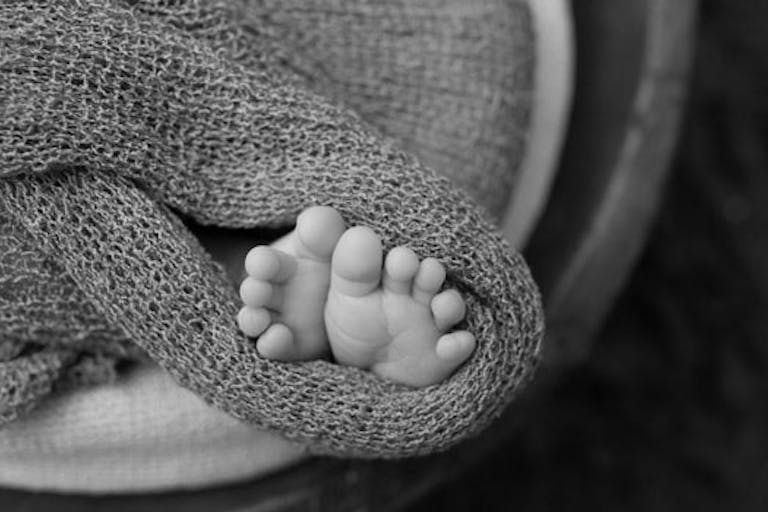
Maine abortion business drops legal challenge to Medicaid defunding
Bridget Sielicki
·
Human Interest·By Nancy Flanders
Mother angry that daughter died naturally instead of being aborted: ‘She shouldn’t have had to wait’
Another mother is arguing that she should have been able to kill her baby prematurely through abortion rather than allow her daughter to die a natural death. The media is predictably exploiting the family’s tragedy to promote unrestricted legalized abortion.
Samantha Casiano of East Texas has joined a growing list of women who believe it would have been better to abort than to carry to term. In December of 2022, Roe v. Wade was no longer in place and the Texas Heartbeat Act was in full effect, protecting preborn babies from abortion once their heartbeats were detectable — at about six weeks gestation. According to MSNBC, that’s when Casiano, pregnant with her fifth child, learned that her baby had anencephaly, a condition in which the brain, skull, and scalp are missing, exposing the brain to amniotic fluid. Most children born with the condition do not live long outside of the womb, though at least one, Angela, lived for nearly four years.
“I was told that it meant that my daughter was incompatible with life. And I wouldn’t be adding another little human to our family. It was really hard to hear that. It felt like it was a dream — a really, really bad dream,” she said.
Casiano’s daughter, Halo Hope, was a human being from the moment of fertilization and was always a member of the Casiano family. Receiving a diagnosis doesn’t negate a baby’s humanity.
At the time of her prenatal diagnosis — a tool that can be beneficial but which is sadly also used to exterminate children with disabilities — Casiano was told by her doctor that Halo “would die, either before I give birth, or as soon as I do give birth.” Texas protects preborn children in all circumstances except when the mother’s life is said to be at risk (though induced abortion — the direct and intentional killing of the preborn child — is not medically necessary). Because of this, Casiano could not have an abortion in Texas, and she said she couldn’t financially or logistically travel for one, either. Texas’ pro-life law protected Halo from the horror of death by abortion, and protected Casiano too, though she may not feel that it did. Casiano remains angry that she could not abort Halo.
“I should have been able to release my daughter that day [she was diagnosed]. I just wasn’t able to. I was restricted from doing that,” she said.
“Incompatible with life”
Though Boston Children’s Hospital states that 75% of children with anencephaly will be stillborn, a report of families who chose to carry to term shows that about seven percent (7%) of babies with anencephaly died in the womb naturally and 18% died at birth. That means 75% survived outside the womb for some amount of time.
About a quarter (26%) lived up to an hour, 27% lived between one and 24 hours, 17% lived between one and five days, and five percent (5%) lived six or more days. The report also found that “[o]ther pregnancy complications were rarely recorded” in pregnancies with babies with anencephaly. Of these families, not one reported regret about carrying their baby to term. Rather, they remarked at the importance of being able to hold their babies and give them funerals.
Casiano didn’t see it that way. “Just imagine yourself waking up every morning, knowing that your daughter was going to die. You can feel her kick and move, but she’s going to die. So you have to plan her funeral while she’s inside of you,” she said. “And that’s probably the hardest thing any mother has to go through… It was traumatizing and hard. Just thinking about it now is just me makes my stomach hurt. And I was forced to go through it. It was torture.”
The pain of losing a child is unimaginable, and terrifying for parents to experience. But subjecting a child to abortion is also torture — and not just of an emotional kind. A D&E is the most common abortion procedure carried out in the second trimester and involves the dismemberment of the baby. The abortionist uses a Sopher clamp to tear the baby’s legs and arms off of her body before crushing the baby’s skull.

The infant mortality rate and abortion
MSNBC argued that not allowing abortions on children with a life-limiting diagnosis causes the infant mortality rate to rise. The infant mortality rate that MSNBC mentions is based on a new study published in the Journal of the American Medical Association (JAMA) that attempts to connect an increase in Texas’ total number of infant mortalities in 2022 to its implementation of SB8, the Texas Heartbeat Act, in 2021. Study authors asserted that their “findings suggest that abortion restrictions may have negative spillover effects on infant health.”
But in an analysis, Live Action staff writer and researcher Bettina di Fiore explained, “According to JAMA, there were 255 more infant deaths in Texas in 2022 than there were in 2021. However, the study fails to note that this number is dwarfed by the state’s increase in births during the same period.”
An analysis published by the University of Houston revealed Texas saw 16,147 more births in 2022 than in the previous year. It also found that Texas’ fertility rate “rose in 2022 for the first time since 2014, by 2.0% over 2021[.]”
The Centers for Disease Control and Prevention (CDC) reported that the Texas infant mortality rates in both 2017 and 2014 – 5.85 deaths per 1,000 births – were higher than the Texas infant mortality rate in 2022, which was 5.72. CDC statistics also show that the Texas infant mortality rate for 2016 was identical to that of 2022, and close to 2015’s rate of 5.71.
“In other words,” wrote di Fiore, “considered in context, Texas’ infant mortality data reveals that there is actually no controversy here, and certainly no legitimate cause for hysteria or hyperbole.”
Abortion is not better for babies or parents
Every day in the United States, 47 children are diagnosed with cancer and each year, 1,800 of those children will die from the disease. Their parents care for them, love them, and do everything in their power to help them live as long as possible with as little suffering as possible while hoping for a miracle. And along the way, better treatments are being developed for future children. Yet, many children who receive a diagnosis in the womb don’t receive that same level of love, dignity, and respect.
Casiano gave birth to her daughter Halo Hope, who lived for four hours outside of the womb. Though Casiano said Halo “gasped for air” throughout that time and “changed colors right in front of me,” babies with anencephaly are typically unconscious, blind, deaf, and unable to feel pain. The main treatment at birth involves keeping the baby comfortable.
Casiano, however, explained, “And at a certain point, I couldn’t mentally and emotionally [cope]. I feel like mentally I had to close off in order to keep sane.” Somehow, Casiano believes abortion would have been better for her, personally. However, as previously reported by Live Action News:
Significant research shows that women who abort following fetal diagnoses suffer “physical and emotional pain, with psychosocial and reproductive consequences.” Additional studies reveal that aborting a ‘wanted’ baby due to a diagnosis can be a “traumatic event … which entails the risk of severe and complicated grieving.” After 14 months, 17% of women who had an abortion following a fetal diagnosis were diagnosed with a psychiatric disorder such as post-traumatic stress, anxiety, or depression.
A study in the journal Prenatal Diagnosis found, “Women who terminated [following prenatal diagnosis of a lethal fetal anomaly] reported significantly more despair, avoidance, and depression than women who continued the pregnancy. … There appears to be a psychological benefit to women to continue the pregnancy following a lethal fetal diagnosis.” Likewise, a study in France found that grief in both those who aborted and those who carried to term was similar, but those who aborted their babies expressed more guilt. Parents who carried to term have also reported being emotionally and spiritually prepared for their baby’s death and feeling “a sense of gratitude and peace surrounding the brief life of their child.”
Casiano maintains she wanted Halo to die sooner than she did, and not from natural causes. “When I buried her, it was a bittersweet moment… releasing her into heaven. But I’m mad that it took this long to get there. She shouldn’t have had to wait that long,” she said.
Live Action News is pro-life news and commentary from a pro-life perspective.
Contact editor@liveaction.org for questions, corrections, or if you are seeking permission to reprint any Live Action News content.
Guest Articles: To submit a guest article to Live Action News, email editor@liveaction.org with an attached Word document of 800-1000 words. Please also attach any photos relevant to your submission if applicable. If your submission is accepted for publication, you will be notified within three weeks. Guest articles are not compensated (see our Open License Agreement). Thank you for your interest in Live Action News!

Bridget Sielicki
·
Human Interest
Nancy Flanders
·
Human Interest
Isabella Childs
·
Human Interest
Bridget Sielicki
·
Human Interest
Nancy Flanders
·
Human Interest
Melina Nicole
·
Abortion Pill
Nancy Flanders
·
Politics
Nancy Flanders
·
Human Interest
Nancy Flanders
·
Analysis
Nancy Flanders
·
Politics
Nancy Flanders
·